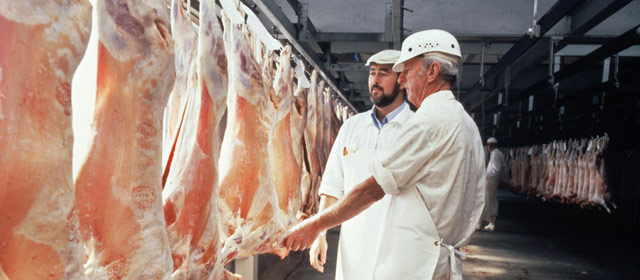Story summary
Dairy processing
The first dairy factories were set up in New Zealand in the 1870s and 1880s, when refrigeration was introduced. Before then farmers made butter at home.
Refrigerated shipping meant that New Zealand dairy products could be sold overseas. Exporting dairy products became one of New Zealand’s biggest money-earners.
By the early 1900s there were hundreds of dairy factories, many owned by farmer co-operatives. Because of mergers and takeovers there were only three co-operatives by 2001. The biggest was Fonterra Co-operative Group.
The dairy products made by New Zealand factories are:
- milk powder
- cream products, including butter and milk fat
- cheese
- protein products such as casein.
Wool processing
The first woollen mills opened in the 1870s to spin and weave the wool from New Zealand’s large number of sheep. They made fabric for clothes and blankets, and yarn for knitting.
Mills employed many workers, mostly young women. They worked long hours and were paid much less than men.
During the first and second world wars the factories were very busy making khaki fabric for army uniforms. They worked 24 hours a day and could not get enough staff.
From the 1980s more fabrics and yarn were imported, and many factories closed.
Grain processing
The first grain mill was built in New Zealand in 1834, and many more were built in the 1840s. They turned wheat into flour by grinding it between millstones. Flour was needed to make bread, which was a staple food.
Later millstones were replaced by rollers, which crushed the grain.
By the early 2000s most of the wheat milled for flour was imported from Australia.
Meat processing and freezing works
In 1882, when the first shipment of frozen meat was sent to Britain, New Zealand began to export meat overseas.
Freezing works are factories where animals (mainly sheep and cows) are killed and their meat processed. At first the meat was frozen, but by the 2000s it was mostly chilled.
Working in a freezing works was a hard and dangerous job. Freezing workers had strong trade unions, which fought for better pay and conditions. Until the 1970s few women worked in freezing works, and generally in lower-paid jobs.
Older freezing works closed from the 1980s, putting many people out of work.





